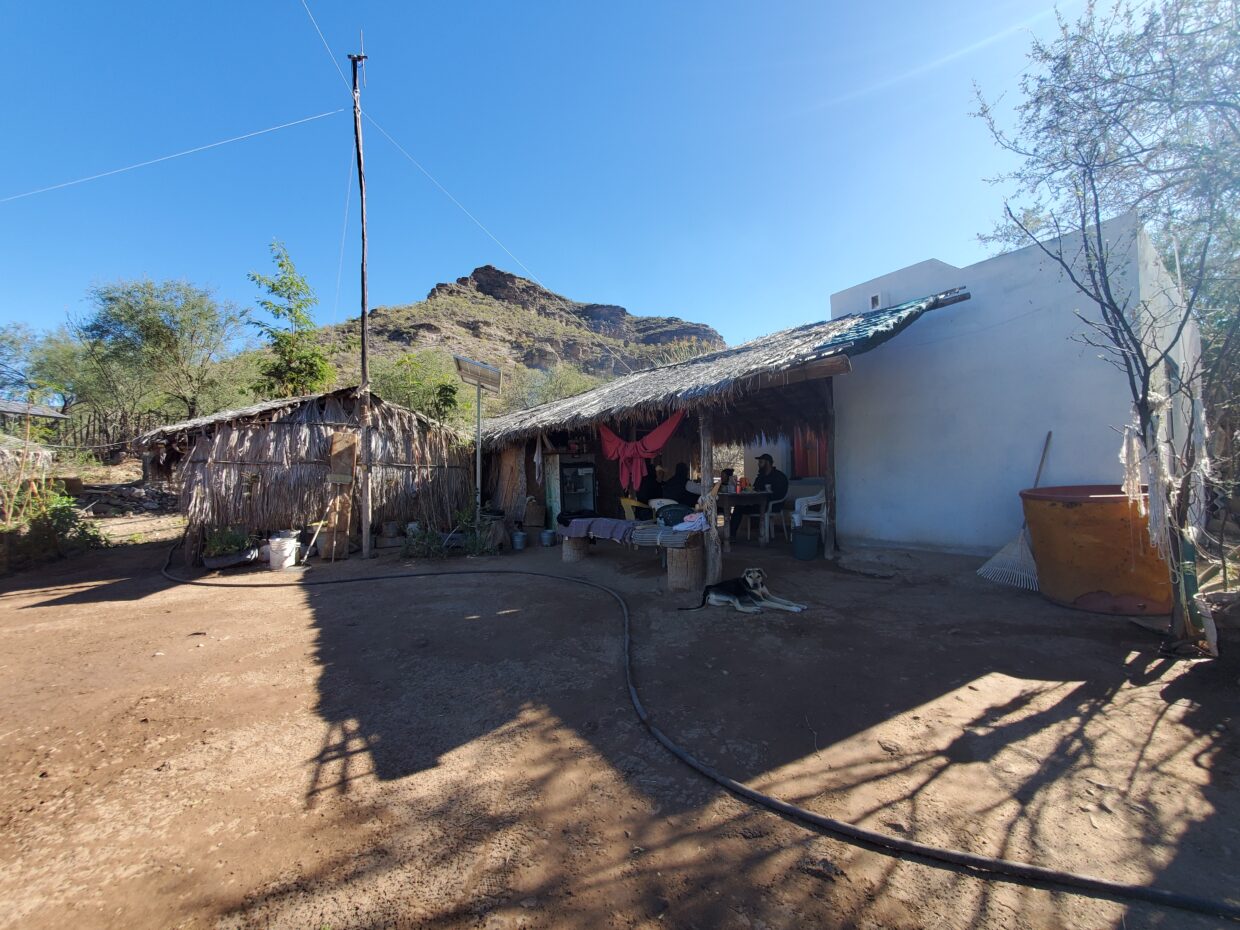Living Within Biodiversity’s Web: Ranching, Resilience, and Climate Change in Baja Sur
For centuries life in the interior ranches of Baja California Sur has been lived in a close rhythm with the land. The 18th century Spanish missions brought permanent change to Baja when they adapted European range life to the peninsula’s interior regions. Over time these ranches have formed a tight knit community in a resilient system where livestock wander freely until drought bites harder, fruit trees blossom and wither in shifting seasons, and ranchers often gather after a long day under a palm-thatch roof for meals with family and friends to share their stories.
But these days, the rhythm of ranch work is less certain. Today, ranchers speak of hurricanes that wash away soil and roads, taking old growth along with it in an instant. During the dry La Niña seasons it is a struggle to keep livestock healthy and alternatively during El Niño seasons struggle with increasingly harsher storms that wipe out vital infrastructure, this has become especially difficult as the climate lurches further and further between extremes. The land and climate that once offered predictable cues following time tested patterns, now challenges even the most seasoned ranches. In the current environment, many decisions by the ranchers seem a gamble.
From our conversations with ranchers, what emerges is not only hardship, but a deep ecological wisdom. The ranching families of Baja Sur have noticed subtle changes that inevitably grow into larger seemingly intractable problems. Their daily lives are entwined with the biodiversity around them. The environmental knowledge of ranchers, honed over generations, is a living archive of adaptation to the ever changing environment where they have lived and worked for centuries.
Our study sought to listen carefully to these voices. Through thematic analysis of conversations in ranch kitchens and courtyards, we found that biodiversity and ranch livelihood are inseparable. As hurricanes intensify and seasonal patterns become less predictable, the ranchers’ observations form critical and nuanced data points that science alone might miss. In our conversations, drought, hurricanes, and shifting seasonal patterns surfaced again and again. In the transcripts, the words “years,” “rain,” and “water” echoed most frequently, underscoring how central climate variability is to ranch life in Baja.

The ranch system of Baja is more than a simple patchwork of livestock and fences dotting the landscape. The ranches are interconnected mixed agro-ecological systems supporting goats, cattle, fowl, fruit trees, and small gardens. All coexisting in shifting ecosystems with invertebrate communities that turnover with the seasons and wild predators like mountain lions, who grow bolder in drought years. During lean years, specialty products like cheeses, sweets, and leather goods are alternative income streams and are made seasonally available, but are by no means a substitute for the ranch’s primary income source. Some ranches experiment with ecotourism. For instance, some spoke of hosting mountain bikers traversing the rugged El Camino Real that courses west to east and connects the Pacific Coast to the Sea of Cortez. While helpful, this income stream also showed mixed results and is not something that is relied upon but rather helps to bridge resource scarcity during the times between especially harsh seasons.
In the ranches of Baja California Sur biodiversity loss cascades into social risk. As native vegetation dies back and forage declines, predation increases, livestock weaken, and families struggle to keep younger generations on the ranches. Along the arroyo trails, we saw abandoned homesteads, testimony to the pressures of climate extremes. For those who remain, resilience depends on recognizing ecological shifts early and adapting quickly. By pairing traditional ecological knowledge with methods like environmental DNA sampling, we can begin to build tools that both measure biodiversity and support the communities who rely on it.
In Baja Sur, a day in the life of a rancher is a day lived within biodiversity’s web. Each goat, each garden, each weathered oasis is part of a larger system of survival and adaptation. To honor this is to recognize that science, too, must adapt toward equity, toward listening, and toward building knowledge hand-in-hand with the communities most attuned to the land where they have thrived. Our project is a beginning for that process in the ranches of Baja California Sur.





